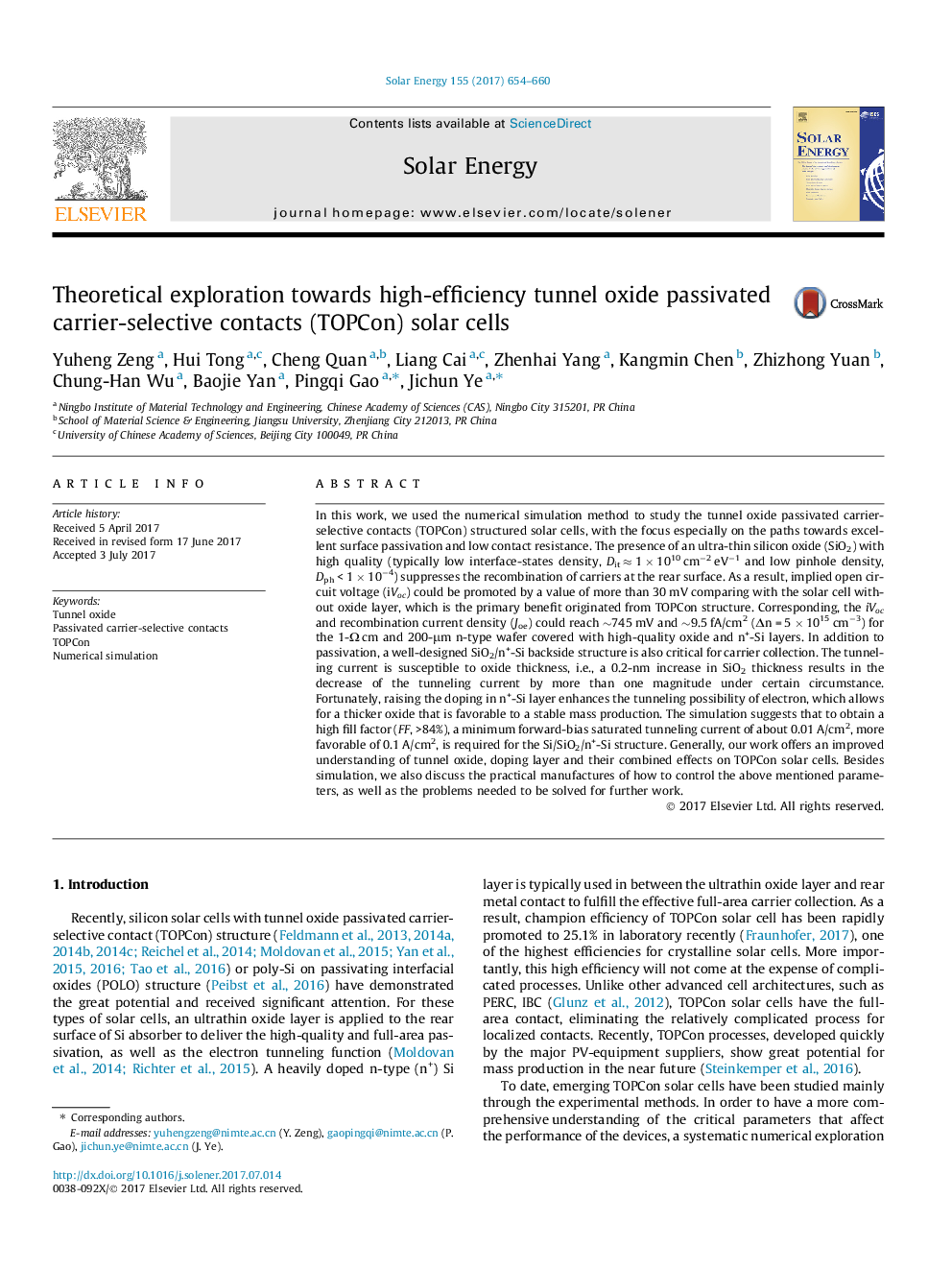| Article ID | Journal | Published Year | Pages | File Type |
|---|---|---|---|---|
| 5450657 | Solar Energy | 2017 | 7 Pages |
Abstract
In this work, we used the numerical simulation method to study the tunnel oxide passivated carrier-selective contacts (TOPCon) structured solar cells, with the focus especially on the paths towards excellent surface passivation and low contact resistance. The presence of an ultra-thin silicon oxide (SiO2) with high quality (typically low interface-states density, Dit â 1 Ã 1010 cmâ2 eVâ1 and low pinhole density, Dph < 1 Ã 10â4) suppresses the recombination of carriers at the rear surface. As a result, implied open circuit voltage (iVoc) could be promoted by a value of more than 30 mV comparing with the solar cell without oxide layer, which is the primary benefit originated from TOPCon structure. Corresponding, the iVoc and recombination current density (Joe) could reach â¼745 mV and â¼9.5 fA/cm2 (În = 5 Ã 1015 cmâ3) for the 1-Ω cm and 200-μm n-type wafer covered with high-quality oxide and n+-Si layers. In addition to passivation, a well-designed SiO2/n+-Si backside structure is also critical for carrier collection. The tunneling current is susceptible to oxide thickness, i.e., a 0.2-nm increase in SiO2 thickness results in the decrease of the tunneling current by more than one magnitude under certain circumstance. Fortunately, raising the doping in n+-Si layer enhances the tunneling possibility of electron, which allows for a thicker oxide that is favorable to a stable mass production. The simulation suggests that to obtain a high fill factor (FF, >84%), a minimum forward-bias saturated tunneling current of about 0.01 A/cm2, more favorable of 0.1 A/cm2, is required for the Si/SiO2/n+-Si structure. Generally, our work offers an improved understanding of tunnel oxide, doping layer and their combined effects on TOPCon solar cells. Besides simulation, we also discuss the practical manufactures of how to control the above mentioned parameters, as well as the problems needed to be solved for further work.
Related Topics
Physical Sciences and Engineering
Energy
Renewable Energy, Sustainability and the Environment
Authors
Yuheng Zeng, Hui Tong, Cheng Quan, Liang Cai, Zhenhai Yang, Kangmin Chen, Zhizhong Yuan, Chung-Han Wu, Baojie Yan, Pingqi Gao, Jichun Ye,
